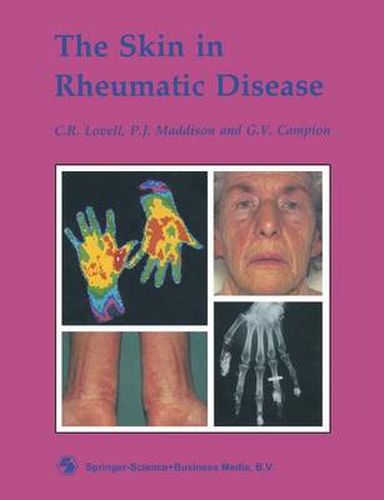Readings Newsletter
Become a Readings Member to make your shopping experience even easier.
Sign in or sign up for free!
You’re not far away from qualifying for FREE standard shipping within Australia
You’ve qualified for FREE standard shipping within Australia
The cart is loading…






This title is printed to order. This book may have been self-published. If so, we cannot guarantee the quality of the content. In the main most books will have gone through the editing process however some may not. We therefore suggest that you be aware of this before ordering this book. If in doubt check either the author or publisher’s details as we are unable to accept any returns unless they are faulty. Please contact us if you have any questions.
Connective tissue disorders form an important area of overlap between the specialities of dermatology and rheumatology. Recognition of subtle changes in the skin, and their interpretation, are important in the diagnosis and management of patients with connective tissue disease. The skin is a convenient organ for study and techniques such as skin biopsy and nail fold capillary microscopy yield much information about underlying disease processes. Additionally, skin changes may be of prognostic significance, for example nodules and vasculitis in a patient with rheumatoid disease. In some disorders, alterations in the skin are of primary pathological importance, such as the exacerbation of systemic lupus erythematosus after ultraviolet irradiation of the skin. This book gives an account of the more important connective tissue diseases which have cutaneous manifestations. Emphasis is given on methods of achieving a correct diagnosis based on clinical features together with the appropriate laboratory investigations and to summarize the most effective currently available modes of therapy. Apart from chapters on specific disorders such as rheumatoid disease, lupus erythematosus and the sclerodermas, practical information is also given on specific investigative techniques and the major adverse effects of drugs and other therapeutic techniques used in rheumatological practice. The book ends with the discussion of common diagnostic problems encountered in the patient with a suspected connective tissue disease. This book should be of interest to dermatologists, rheumatologists and physicians.
$9.00 standard shipping within Australia
FREE standard shipping within Australia for orders over $100.00
Express & International shipping calculated at checkout
This title is printed to order. This book may have been self-published. If so, we cannot guarantee the quality of the content. In the main most books will have gone through the editing process however some may not. We therefore suggest that you be aware of this before ordering this book. If in doubt check either the author or publisher’s details as we are unable to accept any returns unless they are faulty. Please contact us if you have any questions.
Connective tissue disorders form an important area of overlap between the specialities of dermatology and rheumatology. Recognition of subtle changes in the skin, and their interpretation, are important in the diagnosis and management of patients with connective tissue disease. The skin is a convenient organ for study and techniques such as skin biopsy and nail fold capillary microscopy yield much information about underlying disease processes. Additionally, skin changes may be of prognostic significance, for example nodules and vasculitis in a patient with rheumatoid disease. In some disorders, alterations in the skin are of primary pathological importance, such as the exacerbation of systemic lupus erythematosus after ultraviolet irradiation of the skin. This book gives an account of the more important connective tissue diseases which have cutaneous manifestations. Emphasis is given on methods of achieving a correct diagnosis based on clinical features together with the appropriate laboratory investigations and to summarize the most effective currently available modes of therapy. Apart from chapters on specific disorders such as rheumatoid disease, lupus erythematosus and the sclerodermas, practical information is also given on specific investigative techniques and the major adverse effects of drugs and other therapeutic techniques used in rheumatological practice. The book ends with the discussion of common diagnostic problems encountered in the patient with a suspected connective tissue disease. This book should be of interest to dermatologists, rheumatologists and physicians.